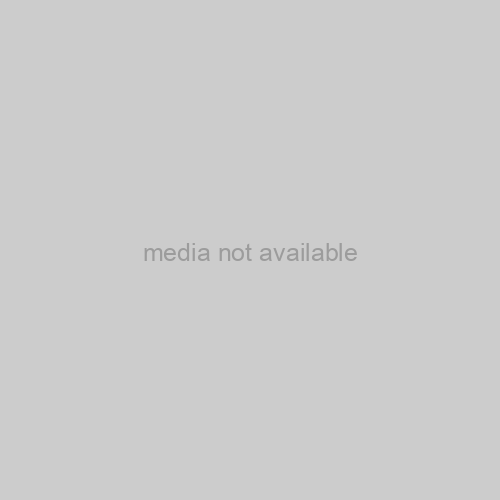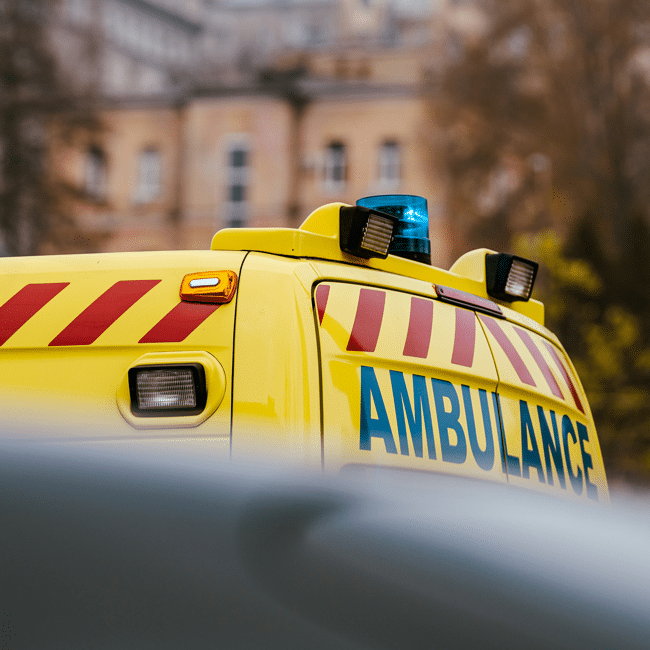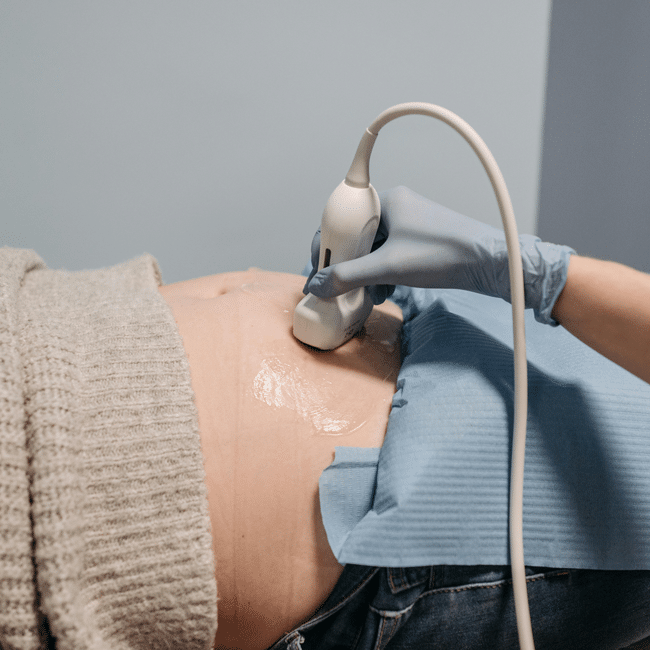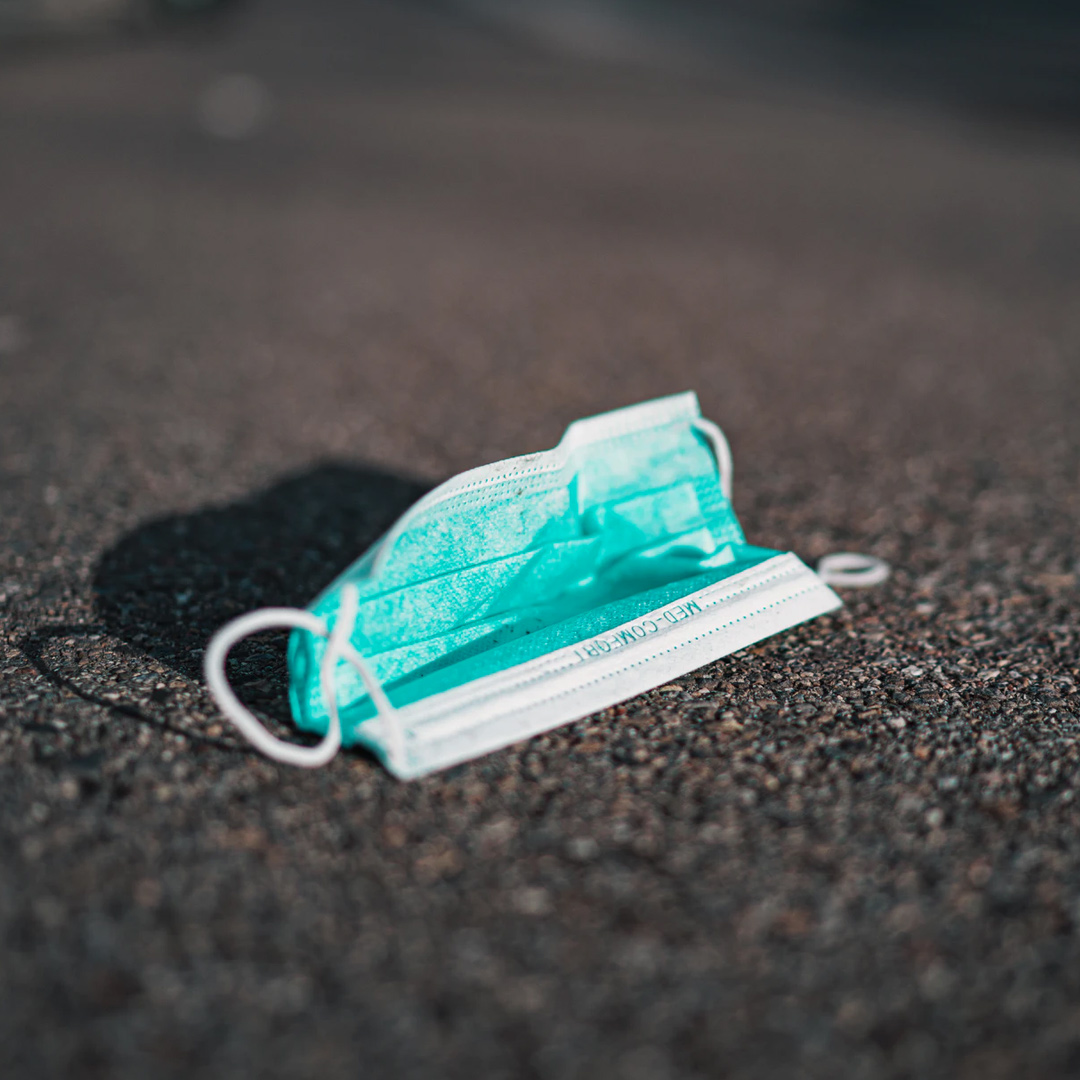The undeserved doubt of the anti-vaxxer
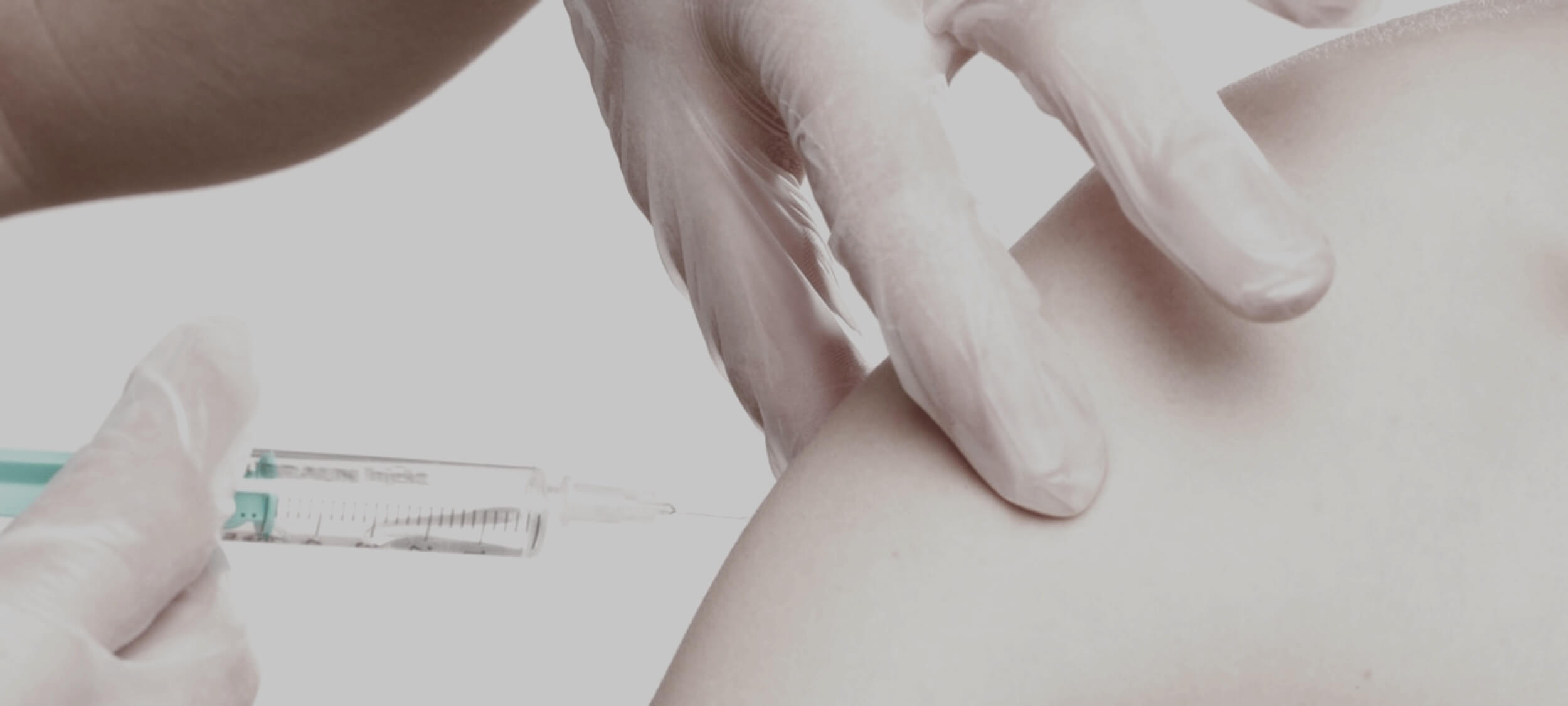
The undeserved doubt of the anti-vaxxer
Opinion + AnalysisHealth + WellbeingScience + Technology
BY Pat Stokes The Ethics Centre 17 OCT 2015
For the last three years or so I’ve been arguing with anti-vaccination activists. In the process I’ve learnt a great deal – about science denial, the motivations of alternative belief systems and the sheer resilience of falsehood.
Since October 2012 I’ve also been actively involved in Stop the AVN (SAVN). SAVN was founded to counter the nonsense spread by the Australian Vaccination-skeptics Network. According to anti-vaxxers SAVN is a Big Pharma-funded “hate group” populated by professional trolls who stamp on their right to free speech.
I’m afraid the facts are far more prosaic. There’s no Big Pharma involvement – in fact there’s no funding at all. We’re just an informal group of passionate people from all walks of life (including several research scientists and medical professionals) who got fed up with people spreading dangerous untruths and decided to speak out.
When SAVN started in 2009, antivax activists were regularly appearing in the media for the sake of “balance”. This fostered the impression of scientific controversy where none existed. Nowadays, the media understand the harm of false balance and the antivaxxers are usually told to stay home.
There’s a greater understanding that scientists are best placed to say whether or not something is scientifically controversial. (Sadly we can’t yet say the same for the discussion around climate change.) And there’s much greater awareness of how wrong – and how harmful – antivax beliefs really are.
No Jab, No Pay
This shift in attitudes has been followed by significant legislative change. Last year NSW introduced ‘No Jab, No Play’ rules. These gave childcare centres the power to refuse to enrol non-vaccinated children. Queensland and Victoria are planning to follow suit.
In April, the Abbott government introduced ‘No Jab, No Pay‘ legislation. Conscientious objectors to vaccination could no longer access the Supplement to the Family Tax Benefit Part A payment.
The payment has been conditional on children being vaccinated since 2012, as was the payment it replaced. But until now vaccination refusers could still access the supplement by having a “conscientious objection” form signed by a GP or claiming a religious belief exemption. The new legislation removes all but medical exemptions.
The change closes loopholes that should never have been there in the first place. Claiming a vaccination supplement without vaccinating is rather like a childless person insisting on being paid the Baby Bonus despite being morally opposed to parenthood.
The new rules also make the Child Care Benefit (CCB) and Child Care Rebate (CCR) conditional on vaccinating children. That’s not a trivial impost – estimates at the time of the announcement suggested some families could lose around $15,000 over four years.
What should we make of this? A necessary response to an entrenched problem or a punitive overreaction?
Much of the academic criticism of the policy has been framed in terms of whether it will in fact improve vaccination rates. Conscientious objector numbers do now seem to be falling, although it remains to be seen whether this is due to the new policies.
Embedded in this line of criticism are three premises:
- Improvements in the overall vaccination rate will come through targeting the merely “vaccine-hesitant” population.
- Targeting the smaller group of hard core vaccine refusers, accounting for around 2% of families, would be counterproductive.
- The hard core is beyond the reach of rational persuasion even via benefit cuts.
These are of course empirical questions and open to testing. I suspect the third assumption is true. It’s hard to see how someone who believes the entire medical profession and research sector is either corrupt, inept, or both, or that government and media deliberately hide “the Truth”, would ever be persuaded by evidence from just those sources.
A few antivaxxers even believe the germ theory of disease itself is false. In such cases no amount of time spent with a GP explaining the facts is going to help.
They base their “choices” on beliefs ranging from the ridiculous to the repugnant, but their fundamental objection is that the new policies are coercive.
In recent years, antivax activists have tended to frame their objections to legislation like No Jab, No Pay in terms of individual rights and freedom of choice.
Yes, they base their “choices” on beliefs ranging from the ridiculous to the repugnant (including the claim that Shaken Baby Syndrome is really the result of vaccination not child abuse), but their fundamental objection is that the new policies are coercive. They make the medical procedure of vaccination compulsory, which they regard as a violation of basic human rights.
Part of this isn’t in dispute – these measures are indeed coercive. Whether they amount to compulsory vaccination is a more complex question. In my view they do not, because they withhold payments rather than issuing fines or other sanctions, although that can still be a serious form of coercive pressure. Such moves also have a disproportionate impact on families who are less well-off, revealing a broader problem with using welfare to influence behaviour.
Nonetheless, it’s not particularly controversial that the state can use some coercive power in pursuit of public health goals. It does so in a range of cases – from taxing cigarettes to fining people for not wearing seatbelts. Of course there is plenty of room for disagreement about how much coercion is acceptable. Recent discussion in Canberra about so-called “nanny state” laws reflects such debate.
But vaccination doesn’t fall into the nanny state category because vaccination decisions aren’t just made by and for individuals. Several different groups rely on herd immunity to protect them. Herd immunity can only be maintained if vaccination rates within the community are kept at high levels. By refusing to contribute to a collective good they enjoy, vaccine refusers provide a classic example of the Free Rider Problem.
No Jab, No Pay legislation is not about people making vaccination decisions for themselves, but on behalf of their children. The suggestion that parents have some sort of absolute right to make health decisions for their children just doesn’t hold water. Children aren’t property, nor are our rights to parent our children how we see fit absolute. No-one thinks the choice to abuse or starve one’s child should be protected, for example.
And that gives lie to the “pro-choice” argument against these laws – not all choices deserve respect.
The suggestion that parents have some sort of absolute right to make health decisions for their children just doesn’t hold water. Children aren’t property, nor are our rights to parent our children how we see fit absolute.
Thinking in a vacuum
The pro-choice argument depends on the unspoken assumption there is room for legitimate disagreement about the harms and benefits of vaccination. That gets us to the heart of what motivates a great deal of anti-vaccination activism – the issue of who gets to decide what is empirically true.
Antivax belief may play on the basic human fears of hesitant parents but the specific contents of those beliefs don’t come out of nowhere. Much of it emerges from what sociologists have called the “cultic milieu” – a cultural space that trades in “forbidden” or “suppressed” knowledge. This milieu is held together by a common rejection of orthodoxy for the sake of rejecting orthodoxy. Believe whatever you want – so long as it’s not what the “mainstream” believes.
This sort of epistemic contrarianism might make you feel superior to the “sheeple”, the unawake masses too gullible, thick or corrupted to see what’s really going on. It might also introduce you to a network of like-minded people who can act as a buffer from criticism. But it’s also a betrayal of the social basis of knowledge – our radical epistemic interdependency.
The thinkers of the Enlightenment bid us sapere aude, to “dare to know” for ourselves. Knowledge was no longer going to be determined by religious or political authority, but by capital-r Reason. But that liberation kicked off a process of knowledge creation that became so enormous specialisation was inevitable. There is simply too much information now for any one of us to know it all.
Talk to antivaxxers and it becomes clear they’re stuck on page one of the Enlightenment project. As Emma Jane and Chris Fleming have recently argued, adherence to an Enlightenment conception of the individual autonomous knower drives much conspiracy theorising. It’s what happens when the Enlightenment conception of the individual as sovereign reasoner and sole source of epistemic authority confronts a world too complex for any individual to understand everything.
As a result of this complexity we are reliant on the knowledge of others to understand the world. Even suspicion of individual claims, persons, or institutions only makes sense against massive background trust in what others tell us.
Accepting the benefits of science requires us to do something difficult – it requires us to accept the word of people we’ve never met who make claims we can never fully assess.
Accepting the benefits of science requires us to do something difficult – something nothing in our evolutionary heritage prepares us to do. It requires us to accept that the testimony of our direct senses no longer has primary authority. And it requires us to accept the word of people we’ve never met who make claims we can never fully assess.
Anti-vaxxers don’t like that loss of authority. They want to think for themselves, but they don’t accept we can’t think in a vacuum. We do our thinking against the background of shared standards and processes of reasoning, argument and testimony. Rejecting those standards by making claims that go against the findings of science without using science isn’t “critical thinking”. No more than picking up the ball and throwing it is “better soccer”.
This point about authority tells us something ethically important too. Targeting the vaccine-hesitant rather than the hard core refusers makes a certain kind of empirical sense.
But it’s important to remember the hard core are the source of the misinformation that misleads the hesitant. In the end, the harm caused by antivax beliefs is due to people who abuse the responsibility that comes with free speech. Namely, the responsibility to only say things you’re entitled to believe are true.
Most antivaxxers are sincere in their beliefs. They honestly do think they’re doing the right thing by their children. That these beliefs are sincere, however, doesn’t entitle them to respect and forbearance. William Kingdon Clifford begins his classic 1877 essay The Ethics of Belief with a particularly striking thought experiment.
A shipowner was about to send to sea an emigrant-ship. He knew that she was old, and not well built at the first; that she had seen many seas and climes, and often had needed repairs. Doubts had been suggested to him that possibly she was not seaworthy. These doubts preyed upon his mind and made him unhappy; he thought that perhaps he ought to have her thoroughly overhauled and refitted, even though this should put him at great expense. Before the ship sailed, however, he succeeded in overcoming these melancholy reflections.
He said to himself that she had gone safely through so many voyages and weathered so many storms that it was idle to suppose she would not come safely home from this trip also. He would put his trust in Providence, which could hardly fail to protect all these unhappy families that were leaving their fatherland to seek for better times elsewhere. He would dismiss from his mind all ungenerous suspicions about the honesty of builders and contractors.
In such ways he acquired a sincere and comfortable conviction that his vessel was thoroughly safe and seaworthy; he watched her departure with a light heart, and benevolent wishes for the success of the exiles in their strange new home that was to be; and he got his insurance-money when she went down in mid-ocean and told no tales.
Note that the ship owner isn’t lying. He honestly comes to believe his vessel is seaworthy. Yet Clifford argues, “the sincerity of his conviction can in no way help him, because he had no right to believe on such evidence as was before him.”
In the 21st century nobody has the right to believe scientists are wrong about science without having earned that right through actually doing science. Real science, mind you, not untrained armchair speculation and frenetic googling. That applies as much to vaccination as it does to climate change, GMOs and everything else.
We can disagree about the policy responses to the science in these cases. We can also disagree about what financial consequences should flow from removing non-medical exemptions for vaccination refusers. But removing such exemptions sends a powerful signal.
We are not obliged to respect harmful decisions grounded in unearned beliefs, particularly not when this harms children and the wider community.
Ethics in your inbox.
Get the latest inspiration, intelligence, events & more.
By signing up you agree to our privacy policy
You might be interested in…
Opinion + Analysis
Health + Wellbeing
I’m an expert on PTSD and war trauma but I won’t do the 22 push up challenge
Opinion + Analysis
Health + Wellbeing
When you hire a philosopher as your ethicist, you are getting a unicorn
Opinion + Analysis
Health + Wellbeing, Relationships
Pop Culture and the Limits of Social Engineering
Opinion + Analysis
Health + Wellbeing, Relationships
How to pick a good friend
BY Pat Stokes
Dr Patrick Stokes is a senior lecturer in Philosophy at Deakin University. Follow him on Twitter – @patstokes.
BY The Ethics Centre
The Ethics Centre is a not-for-profit organisation developing innovative programs, services and experiences, designed to bring ethics to the centre of professional and personal life.
HSC exams matter – but not for the reasons you think

HSC exams matter – but not for the reasons you think
Opinion + AnalysisHealth + Wellbeing
BY The Ethics Centre 12 OCT 2015
Every year at around the time of the Higher School Certificate (HSC) exams, the same messages appear. The HSC isn’t everything – don’t stress! One year the then NSW premier Mike Baird weighed in with, “Life isn’t defined by your exams. It begins after they have finished.”
I remember getting those messages when I did the HSC but they seemed hard to swallow at the time. I’d spent 13 years being told of the importance of school marks and HSC results. High achievers earned awards. The importance of ‘rankings’ put me in competition with my peers and I measured success in Band Sixes.
If we’re going to convince students not to stress too much about results we need to do more than tell them to relax.
If we’re going to convince students not to stress too much about results we need to do more than tell them to relax. Years of conditioning makes students believe the HSC and Australian Tertiary Admission Rank (ATAR) scores have the power to determine their future. For some, the numbers can determine their self-worth.
What we need to do is explain the moral place of education in our lives and how the HSC sits in relation to it.
Why do we worry about academic achievement at all?
One reason is because we recognise knowledge and learning as being beneficial to society. Prime minister Malcolm Turnbull talks to anyone who will listen about the importance of an agile innovation economy. Such an economy relies on creative thinking and education.
Sadly, we live in a world where not every person can receive an education. Still, if we’re wise, we can make sure that every person can benefit from education. As French philosopher Michel Foucault wrote, “knowledge is power”.
Knowledge controlled by a privileged few is a recipe for dictatorship. Used wisely it can provide the power to make our imperfect world a little bit better.
We don’t just value knowledge because it’s useful. Not all learning leads to new inventions, helps the poor or changes the world. That doesn’t mean it’s pointless. Knowledge is ‘intrinsically good’. Learning for learning’s sake is a completely reasonable and very human activity.
Excelling in academic life also takes more than just knowledge or intellect. It requires a curious mind, perseverance and open-mindedness among other things.
In this sense, the HSC results do matter. They show the extent to which students have developed certain virtues of mind and character.
The HSC is an opportunity to reflect on the huge amount of knowledge gained over years of education … It does not predict the future.
What can this tell us about the HSC? A few things. First, the praise we heap on high achievers is not only about the number itself but about the virtues demonstrated in achieving the mark. These virtues aren’t unique to students who score high marks.
Some high-achieving students might be getting by on natural ability rather than any special virtue. This means the final result matters less than the way it was achieved.
Second, the HSC is an opportunity to reflect on the huge amount of knowledge gained over years of education. It’s a chance for students to be proud of what they’ve learned. But that’s all it is. The HSC tells students what they have learned up until this point. It does not predict the future.
Many people who have struggled with exams have flourished and many who have excelled in school have struggled in the real world. The markers of success in school, work and life cannot be fully represented in a single number – much less the worth or value of a person.
Finally, excellence in academic life takes more than individual virtue. It takes a decent slice of luck and help from others. Individual academic achievement is the product of collective effort. Teachers, parents, friends and factors beyond our control help determine both our success and our failure. This provides a dash of both perspective and humility.
HSC marks and ATAR scores try to represent a range of complex processes in a useful and efficient way. But it is those processes that really matter – not the final number itself.
Ethics in your inbox.
Get the latest inspiration, intelligence, events & more.
By signing up you agree to our privacy policy
You might be interested in…
Opinion + Analysis
Health + Wellbeing, Business + Leadership
Service for sale: Why privatising public services doesn’t work
Opinion + Analysis
Health + Wellbeing, Politics + Human Rights, Relationships, Science + Technology
The value of a human life
Opinion + Analysis
Health + Wellbeing, Relationships
Are there any powerful swear words left?
Opinion + Analysis
Society + Culture, Business + Leadership, Health + Wellbeing
Make an impact, or earn money? The ethics of the graduate job
BY The Ethics Centre
The Ethics Centre is a not-for-profit organisation developing innovative programs, services and experiences, designed to bring ethics to the centre of professional and personal life.
Banning euthanasia is an attack on human dignity

Banning euthanasia is an attack on human dignity
Opinion + AnalysisHealth + WellbeingRelationships
BY Chris Fotinopoulos The Ethics Centre 7 OCT 2015
Australia’s persistent anti-euthanasia stance is unfair, cruel and insensitive. It provides limited means to adults of sound mind to die on their own terms.
The current law on euthanasia restricts control and choice for certain terminally ill patients. It does so by denying them access to death-enabling drugs, information on how to administer them and appropriate medical support – including a physician’s assistance when needed.
The law compels certain individuals to die in ways they abhor and cannot easily escape. Meanwhile, others die peacefully and in control – often in their homes surrounded by loved ones and with appropriate medical assistance, albeit clandestine.
I’m always intrigued by the announcement of a prominent Australians death. The deceased invariably dies peacefully at home, with loved ones by their side. Why is it that the powerful and well connected often depart gently? Why are the less privileged compelled to endure irremediable suffering over a prolonged period?
Why it is that the powerful and well connected often depart gently? Why are the less privileged compelled to endure irremediable suffering over a prolonged period?
I’m reminded of a story a young man told me last year. He spoke movingly about how he lost his mother under tragic circumstances that could have been avoided if not for the state’s stance on voluntary euthanasia.
His mother was suffering from a serious long-term mental illness. Her desperate pleas to her doctors to help end a life that she described as “a living hell” were consistently dismissed as irrational. She was ultimately forced to die a violent death at her own hand.
According to her son, the life she foresaw was a life that she did not want. There was very little the medical profession could do to help her end it. His mother’s only option was suicide, which she took one lonely night at home after manically swallowing a cocktail of prescribed pills washed down with alcohol.
Her neighbour discovered her decaying corpse with a plastic bag over its head days after she died what must have been a horrible death.
This had a profound psychological impact on her son. He experienced depression, anxiety and complicated grief. The horror of his mother dying painfully and alone in such a setting is something that will stay with him to his grave.
A humane, just and civilised society should never insist on laws that allow such tragic deaths to continue. It should certainly not allow those rendered powerless through serious illness to suffer horrible deaths of this kind.
Society should do far more to empower the vulnerable through the provision of appropriate medical assistance, guidance and legal support. It should help them govern their life in a way that minimises suffering and delivers dignity in death.
Horrible deaths are not only restricted to the home. They also take place in hospitals and inpatient hospices. Years ago, I spoke with a senior oncologist at The Royal Melbourne Hospital. He spoke candidly about the problem in accessing life-ending medication for his patients.
He spoke of a seriously unwell middle-aged female patient who he regarded as a friend. She had no immediate family or close friends to help her finish her life well. She did not have a network of people who could help enact a plan that allowed her to die peacefully and with dignity in the comfort of her home. The only person who could help was her oncologist but he was legally unable to do what he understood would give her dignity in her death.
In this case both patient and doctor were locked under state control. They were denied choices available to those who have the good fortune, legal nous and medical support to implement their plans away from the state’s reach.
The contradictory and confused nature of our anti-euthanasia laws become apparent when viewed in light of the state’s stance on suicide. Suicide is not illegal. Australians are at liberty to take their own lives through a variety of different means, assuming they have the physical capacity to do so. Despite the grief suicide can cause to bereaved loved ones, it is nearly impossible – and arguably unethical – to prohibit.
A humane, just and civilised society should never insist on laws that allow such tragic deaths to continue.
If someone has the ability to end their life, they are free to do so. But those unable to end their life by their own hand are forced by the law to endure prolonged, unnecessary and irremediable suffering.
Anti-euthanasia advocates often argue palliative care is far more humane and caring than killing. They suggest more funding be directed to palliation rather than amending laws that allow the terminally ill to seek direct death. But those who take this line fail to acknowledge that some patients find death while under palliative sedation repugnant and unacceptable.
Denying a terminally ill person the option of choosing direct death over unwanted palliation is an infringement on their autonomy.
We need to appreciate that palliative care and physician-assisted death are not mutually exclusive. Indeed, terminally ill individuals who have high quality palliative care may be more open to the idea of assisted dying than those who do not.
Research conducted at Brunel University in London found terminal cancer patients in British hospices were more likely to consider doctor-assisted dying than those in hospitals. This contradicts the commonly-held view that assisted dying would decrease if options such as palliation and hospice care were readily available.
Voluntary euthanasia laws would not diminish the value of human life. They would enhance the prospect of a peaceful death by shifting control away from the state and other institutions. If individuals were granted control over this decision they would be empowered to achieve what they believe to be a good death.
If we are committed to delivering a good and peaceful death to all, then the law must extend personal autonomy, greater control and genuine informed choice to all Australians.
Nigel Baggar’s counter-argument is here.
In Australia, support is available at Lifeline 13 11 14, beyondblue 1300 224 636 and Kids Helpline 1800 551 800.
Ethics in your inbox.
Get the latest inspiration, intelligence, events & more.
By signing up you agree to our privacy policy
You might be interested in…
Opinion + Analysis
Business + Leadership, Health + Wellbeing, Society + Culture
Corruption in sport: From the playing field to the field of ethics
Big thinker
Relationships, Society + Culture
Big Thinker: Socrates
WATCH
Relationships
Consequentialism
Opinion + Analysis
Climate + Environment, Relationships
“Animal rights should trump human interests” – what’s the debate?
BY Chris Fotinopoulos
Chris Fotinopoulos is an ethicist, writer and educator. He recently co-authored the Rationalist Society’s submission to the Victorian State Government Inquiry into End of Life Choices.
BY The Ethics Centre
The Ethics Centre is a not-for-profit organisation developing innovative programs, services and experiences, designed to bring ethics to the centre of professional and personal life.
Defining mental illness – what is normal anyway?

Defining mental illness – what is normal anyway?
Opinion + AnalysisHealth + Wellbeing
BY Anke Snoek The Ethics Centre 22 SEP 2015
The fact that mental illness remains poorly understood is not particularly surprising. Even the authoritative Diagnostic and Statistical Manual of Mental Disorders struggles to reach a defensible definition – and it’s in its fifth edition!
Mental illness is often perceived as a chemical imbalance in the brain. This certainly accounts for an element of mental illness, but not all of it. We need to recognise that our definitions of illness are determined as much by our interpretations of those physical or mental changes as they are by the changes themselves.
We define illness based on whether a physical or mental change is incompatible – that is, maladaptive – with a person’s environment. Because our environments are both social and physical, our definitions entail value judgements of how an individual should behave.
The late Oliver Sacks described an island on which hereditary total colour blindness meant the majority of the population were born colour-blind. As such, communal practices reflect the needs of the majority – colour-blind people. The community is most active at dusk and dawn because the light at those times provides the best vision. Non-colour blindness is maladaptive on the island because social practices are designed around colour blindness.
This highlights the cultural influences involved in defining illness. In the case of mental illness, the normative element – what society sees as acceptable or unacceptable – is often more controversial and difficult to identify.
Each era tends to have a mental illness du jour, which seems to emerge as a product of social changes and the incompatibility of certain behaviours with those changes. One era’s shaman is another’s schizophrenic.
In the 1960s a movement called “anti-psychiatry” emerged under the influence of French philosopher Michel Foucault. The movement critiqued the assumptions underlying our concept of mental illness.
Anti-psychiatrist Thomas Szaz considers a person who believes he is Napoleon. To diagnose a disorder, the clinician would need to prove the patient is not Napoleon. Because Western society does not tend to embrace the idea of reincarnation, the man’s belief is maladaptive to his environment. But it would not be so everywhere. Societies with a firm faith in reincarnation, for instance, may not see the man’s beliefs as evidence of mental illness. John of God, a faith healer in Brazil, claims over 20 entities including King Solomon use his body as a healing vessel. Rather than being institutionalised, he is venerated.
In these cases social perception seems to be influencing our definitions of mental illness. Many will argue that the illnesses themselves still exist, but that cultural beliefs simply lead to a failure to diagnose. This may be true, but other cases are less clear. In some situations, culture itself may be the cause of mental illness.
Take the sculptress Camille Claudel. She decided to pursue a career in arts – an unusual decision in the 19th century. Claudel fell in love with the pre-eminent sculptor Auguste Rodin. She became his lover, and they started working together.
Claudel rose from his student to his equal, but Rodin’s reputation distracted from her own achievements. Over time, this led to feelings of exploitation, and paranoia. She was forcibly admitted to a mental institution, where she lived for 30 years.
In a letter, her brother explained to her, “genius doesn’t become women”. Was Claudel suffering a psychological illness, or reacting in the way we’d expect of someone continually overlooked and exploited?
The story of “hysteria” is a less tragic case. In the 19th century, European women began to challenge oppressive, patriarchal value systems. They became depressed, unruly, and threw tantrums. Sexual adventures and explorations were considered symptoms of hysteria.
Some believed hysteria to be a symptom of women’s maternal yearnings. Later, Sigmund Freud suggested hysteric women were sexually unfulfilled, so the prevailing treatment for hysteria became the massage of female genitals by doctors – physician-assisted masturbation.
Of course, we now know hysteria isn’t real. The diagnosis pathologised – made abnormal – women’s reasonable expectation for political freedom and sexual autonomy.
This highlights the fact that each era tends to have a mental illness du jour, which seems to emerge as a product of social changes and the incompatibility of certain behaviours with those changes. One era’s shaman is another’s schizophrenic.
Joan of Arc’s claims to hear the voice of God weren’t widely disputed. Today, we’d suspect she was in need of psychological intervention. Clare of Assisi lived an ascetic life to honour God. She spent the last 27 years of her life in bed, too weak to move. Today, she’d be treated for anorexia nervosa – instead, she was named as a saint.
What is our mental illness du jour? Dutch scientist and author Trudy Dehue describes a “depression epidemic”. She argues many cultures today fail to allow for the possibility people might not always be happy. Social norms make being happy a kind of imperative – “thou shalt be happy”.
The identification of new disorders and increasing diagnoses of previously uncommon ones can reveal social changes. For instance, less play-oriented modes of education may make ordinary childhood spontaneity seem deviant. Increasing rates of ADHD diagnosed among children might have less to do with behavioural problems in children and more to do with our expectations of both them and their attention spans.
That’s not to say mental illness isn’t real, but what we define as a mental illness doesn’t develop in a vacuum. The medical system has a great deal to offer the mentally unwell. We could further support them by acknowledging how our own assumptions of what constitutes ‘normal’ influences our attitudes toward mental illness.
Ethics in your inbox.
Get the latest inspiration, intelligence, events & more.
By signing up you agree to our privacy policy
You might be interested in…
Opinion + Analysis
Health + Wellbeing, Relationships
Academia’s wicked problem
Opinion + Analysis
Health + Wellbeing
Women’s pain in pregnancy and beyond is often minimised
Opinion + Analysis
Business + Leadership, Health + Wellbeing, Relationships
Ending workplace bullying demands courage
Opinion + Analysis
Health + Wellbeing
I’m an expert on PTSD and war trauma but I won’t do the 22 push up challenge
BY The Ethics Centre
The Ethics Centre is a not-for-profit organisation developing innovative programs, services and experiences, designed to bring ethics to the centre of professional and personal life.
Parent planning – we should be allowed to choose our children’s sex

Parent planning – we should be allowed to choose our children’s sex
Opinion + AnalysisHealth + WellbeingRelationshipsScience + Technology
BY Julian Savulescu The Ethics Centre 16 SEP 2015
In 2015, The National Health and Medical Research Council was accepting public submissions regarding sex selection in IVF procedures. It has previously prohibited non-medical sex selection.
This is one of two responses we’ve published on our website. Don’t agree with Julian? Check out Tamara Kayali Browne‘s piece, which argues that IVF sex selection is unethical.
Current NHMRC guidelines prohibit non-medical sex selection by any means. Victoria, Western Australia and South Australia have specifically legislated to ban sex selection using assisted reproduction.
The guidelines are now under review, providing the Australian public, the NHMRC and professionals an opportunity to re-examine their opposition to sex selection.
Opposition to the legalisation of non-medical sex selection illustrates a misunderstanding of the role of law in civil society. If A wants to do X, and B wants to assist A to do X for a price, the sole ground for interfering in their freedom is they will harm someone. Moral disapproval is not a ground for a legal ban.
Who would be harmed by allowing sex selection?
The most obvious candidate is the child. Call him John. The basis of most legislation in assisted reproduction is that the best interests of the child must be paramount. However, it is not against the interests of John to be conceived by sex selection. Indeed, if IVF and sex selection were not performed, John would not exist. John owes his very existence to the act of sex selection.
There is another kind of harm often invoked in these kinds of debates – a moral harm. John is being used as a means to his parents’ ends of having a child whom they have stereotyped goals for. John is being used as an instrument.
People intuitively believe that children should be “gifts”, not valued for particular characteristics, such as sex, intelligence or athletic ability. We ought to give them their own opportunity to make their own life. That is, they should have a right to an open future.
Enter Immanuel Kant
Such objections are best expressed by German philosopher Immanuel Kant, who said people should always be treated as an end, and never a means.
But what Kant actually said is never treat people merely or solely as a means. We treat people as a means all the time – shopkeepers, salesmen, repair people and doctors. We respect adults by obtaining their consent to treat them as a means.
It is not possible to obtain consent from children – particularly not regarding their creation. What then does it mean to treat a child merely as a means?
People have children for all sorts of reasons – to be a sibling, to hold a marriage together, to care for parents, to be a companion, to realise the parent’s dreams, to take over the family business or to be king of England. Ethically, these reasons aren’t important. What matters is how well they treat their child once it is born, whether male, female, disabled, tall, short, come what may.
Something like this kind of “instrumentalisation” objection might be behind the NHMRC’s policy:
A conditional life
The Australian Health Ethics Committee believes that admission to life should not be conditional upon a child being a particular sex.
Equality of all people should not be conditional upon any characteristic, such as their sex. But there is a distinction between continued existence and coming into existence. Continued existence should not be conditional on sex.
It might be thought the same follows for admission to life. But the NHMRC does allow medically motivated sex selection to guard against certain diseases and disabilities. This suggests admission to existence can be “conditional” upon being healthy and non-disabled.
What “conditional” means here is “based on reasons”. One can have children for reasons, such as being of certain sex, having certain abilities, being healthy or not disabled. As long as one loves the child, gives the child an open future and good life, having reasons to have that child is perfectly ethically acceptable.
For example, a father wants to have a son to take to football matches. He therefore moulds the child to his needs by sex selecting. He can still treat the child, once born, as an end by respecting the child’s own decision to pursue an interest in music instead.
Harmful sexist stereotypes
The final alleged harm is to society, either by reinforcing sexist stereotypes or disturbing the sex ratio. In some parts of India and China, there are six males to five females.
Such harms could be real and might be a legitimate basis for interfering in liberty. But another basic principle is that the least liberty-restricting (least coercive) means should be adopted to prevent harm.
The present ban on non-medical sex selection is very wide-ranging and coercive. Are there less coercive means that would allow some sex selection but not reinforce sexist stereotypes and disturb the sex ratio? There are at least three better policies:
- Sex selection only in favour of girls.
- Sex selection for family balancing. That is, sex selection for the second or third child, when the existing children are all of one sex and the preference is for the opposite sex. In Australia, this is the most common reason for sex selection and a little more than 50 percent select girls.
- Incidental sex selection. A couple having IVF and genetic diagnosis for infertility and screening of disorders, could be allowed to express a preference over the healthy embryos, at the discretion of their doctors.
Each of these strategies is less liberty-restricting and would protect the public interest.
There are no good grounds for the blanket ban on sex selection. Sex selection does not harm the child and any collateral harm (due to discrimination) can be controlled in better ways. A blanket ban is unethical, excessively restricting procreative liberty.
Ethics in your inbox.
Get the latest inspiration, intelligence, events & more.
By signing up you agree to our privacy policy
You might be interested in…
Opinion + Analysis
Relationships, Science + Technology
With great power comes great responsibility – but will tech companies accept it?
Explainer
Relationships
Ethics Explainer: Double-Effect Theory
Opinion + Analysis
Relationships
When identity is used as a weapon
Opinion + Analysis
Relationships
Ozi Batla: Fatherhood is the hardest work I’ve ever done
BY Julian Savulescu
Julian Savulescu holds the Uehiro Chair in Practical Ethics and is Director of the Centre for Practical Ethics at the University of Oxford. He also directs the Oxford Centre for Neuroethics and the Institute for Science and Ethics. He is Editor of the Journal of Medical Ethics.
BY The Ethics Centre
The Ethics Centre is a not-for-profit organisation developing innovative programs, services and experiences, designed to bring ethics to the centre of professional and personal life.
Women must uphold the right to defy their doctor’s orders

Women must uphold the right to defy their doctor’s orders
Opinion + AnalysisHealth + WellbeingRelationships
BY Hannah Dahlen The Ethics Centre 9 APR 2015
I don’t know what disturbed me most about Genevieve Tait’s opening argument.
Was it that it was written by a woman? Or a student doctor who would one day care for women? Or was it that these thoughts were not just the naive reflections of youth and inexperience but attitudes I see commonly expressed in society and by medical professionals with years of experience?
Ms Tait and I agree on this much, “Every woman should have the right to make a choice about her birthing strategy and her body. This right is inalienable.” But with her following sentence, she loses my support, “But sometimes I worry that women get so concerned about how they are going to deliver the baby that they forget about the actual welfare of the baby.”
If an expecting mother defies an obstetrician’s advice against a vaginal birth, we need to assume and respect her decision is motivated by reasons other than “competitiveness and entitlement”. And if we don’t – if we coerce a woman already under duress – we may trigger a toxic postnatal experience.
Women have told us there is something worse than death. It is in being alive but feeling dead inside.
It is in being so traumatised by pressurised interventions in their birth plan that they can’t care for their newborn or have a relationship with their partner. Ms Tait’s comment that “whether a baby first glimpses the light of day via the stomach, in a pair of forceps, or via the vagina, what matters is that the baby arrives alive and the mother stays alive” is clearly naïve. We need women and babies to be more than simply alive; we need them to be well physically, emotionally and culturally.
We need women and babies to be more than simply alive; we need them to be well physically, emotionally and culturally.
A pregnant Jehovah’s Witness and her nearly 27-week foetus died after she refused a blood transfusion for acute leukaemia in a Sydney hospital. This has been raised in the media this week and led to significant public debate. We might find this hard to comprehend, but the law is clear – the woman was an adult with the mental capacity to refuse treatment and the foetus is not a legal person in his or her own right until it is born.
We inevitably see the backlash and the comments that laws should be introduced to force pregnant women to consider the interests of their baby first. The innocent baby becomes the justification of our outrage. But we cannot force someone who is not pregnant to have a medical procedure for the good of another. When a man refused to donate his bone marrow to save his cousin’s life and his cousin then tried to sue him for neglect, the court found that to compel a person to submit to intrusion of his body for the good of another “would change every concept and principle upon which our society is founded” (McFall v. Shimp).
The USA demonstrates the ramifications of perching on such a slippery slope when it comes to foetal rights. The expansion of foetal rights in the USA and the recent debates over similar law reform in Australia, such as Zoe’s Law, are a warning sign to us. Do we really want to go the way of the USA where women have been charged with eating junk food, taking drugs or even having sex that could or did harm their baby? In Western Australia in 2012 when there was discussion of possible foetal homicide laws being introduced, the WA Australian Medical Association called for the laws to be extended to include women who chose a home birth or drank alcohol or took drugs. Shortly after this we saw the Right to Life Association calling for the laws to be extended to include abortion.
And so, the ease with which we can slide down the slippery slope of women’s rights becomes clear. So too why a woman’s right to determine what happens to her body is and always should be enshrined in law.
The World Health Organisation and the White Ribbon Alliance have recently produced statements warning against violations of the human rights of childbearing women to determine what happens to their bodies and to receive respectful care from health care providers.
Now to the real questions. How often do women actually refuse medical advice and why do they? The answer to the first question is rarely; the answer to the second question is more complicated. In the last five years I have worked on several research studies with my PhD students investigating the question of why some women say ‘no’ to our recommendations and services. We have found the main reasons for this choice is a distrust of mainstream services due to trauma during a past birth experience. This is often due to unnecessary or forced intervention and disrespectful, at times downright abusive treatment, from health care providers.
Unnecessary intervention in the private sector in Australia is leading to increased morbidity for mothers and babies. It is not saving lives.
Australia has one of the highest rates of intervention in birth in the world and this is traumatising for many women. Unnecessary intervention in the private sector in Australia is leading to increased morbidity for mothers and babies. It is not saving lives. Giving birth is not just physical. It is intensely emotional, social, and psychological. With suicide now the leading cause of maternal death in the developed world and post traumatic stress disorder (PTSD) affecting up to one in ten women following birth, this is clearly not safe.
Women are not stupid. They read and research their birth options and know the evidence, sometimes even better than health professionals who consider themselves the final authority. Expecting mothers talk on blogs, they tweet, and they post on Facebook – something which our research has found is more than “peer-pressure for grownups”, it can be very constructive. So why are we so insulted when women become active, informed participants in their own welfare?
There is more and more scientific evidence showing that vaginal birth not only primes the immune system, impacting positively on the future health of the child, but may impact the wiring of the human brain and in epigenetic changes. So, are women so misled in “being proud of their vagina’s capacity to deliver children”? Or is vaginal birth much more important than we ever realised?
The answer is not to reject medical intervention but to get the balance right and to ensure that mothers don’t feel like a failure if they need intervention.
Vaginal birth is still the best option for most mothers and babies, but not all. I’ll grant the benefit of the doubt that this is a point Ms. Tait and I largely agree on. However, in situations where vaginal birth is not the best course of action, her argument that women should always defer to the obstetrician’s advice, is where I disagree.
The answer is not to reject medical intervention but to get the balance right and ensure that mothers don’t feel like a failure if they need intervention. Countries with low caesarean section rates and excellent maternal and perinatal outcomes show us that living ‘as nature intended’ for the most part is what is optimal. Iceland, with half our caesarean section rate, loses fewer mothers and babies than we do. Finland, Sweden, Norway, and Iceland are consistently rated as the best places in the world to be a mother. In all of these places midwives are the main providers of care.
In 2005, the World Health Organisation challenged health practitioners not to ask, “Why don’t women accept the service that we offer?” but to question, “Why don’t we offer a service that women will accept?” Let’s stop trying to criminalise women’s choices or bully them into submission and let’s start trying to understand why those choices are made. We need to put in place responsive, sensitive maternity care systems that cater for the individual. And we need to remember and respect that birth for a mother is more than the everyday medical event that is for an obstetrician.
Read Genevieve Tait’s counter-argument here.
Ethics in your inbox.
Get the latest inspiration, intelligence, events & more.
By signing up you agree to our privacy policy
You might be interested in…
Opinion + Analysis
Relationships
Paralympian pay vs. Olympian pay
Opinion + Analysis
Relationships
Is masculinity fragile? On the whole, no. But things do change.
Opinion + Analysis
Business + Leadership, Relationships
How the Canva crew learned to love feedback
Opinion + Analysis
Politics + Human Rights, Relationships
Do Australia’s adoption policies act in the best interests of children?
BY Hannah Dahlen
Hannah Dahlen is a professor of Midwifery at Western Sydney University and a practising midwife.
BY The Ethics Centre
The Ethics Centre is a not-for-profit organisation developing innovative programs, services and experiences, designed to bring ethics to the centre of professional and personal life.
Your child might die: the right to defy doctors orders

Your child might die: the right to defy doctors orders
Opinion + AnalysisHealth + WellbeingRelationships
BY Genevieve Tait The Ethics Centre 8 APR 2015
This is the first of a two-part debate by different members of the medical community on the topic of what is natural and what is reasonable when it comes to birth and a mother’s right to choose her delivery method.
Genevieve Tait worries that many mothers who insist on vaginal birth against medical advice are competing for a fraught badge of womanhood at the risk of their life and the life of their baby:
I recently spent some time working with an obstetrics team at a Melbourne hospital.
I just might have witnessed a new and unexpected Vagina Liberation movement – where women are so proud of their vagina’s capacity to deliver children that the organ has taken on an identity status all of its own.
I frequently saw women wax lyrical, and sometimes even territorial, about their vaginas and vaginal birth.
It would seem that vaginal birth has gone from a functional use of anatomy to a source of competitiveness and entitlement that can be life threatening for expecting mothers and their unborn babies. And birth has become some kind of holy experience, rather than the mechanism by which another life enters the world.
“Vaginal birth has gone from a functional use of anatomy to a source of competitiveness and entitlement that can be life threatening for expecting mothers and their unborn babies.”
I saw many expecting women assert their desire for vaginal birth, even when that birthing method posed particular risks for themselves and their baby. Some women refused to allow for any blood tests or examination in case the result triggered the doctor to recommend induction, early epidural, or C-section.
Every woman should have the right to make a choice about her birthing strategy and her body. This right is inalienable. But sometimes I worry that women get so concerned about how they are going to deliver the baby that they forget about the actual welfare of the baby.
I worry they forget that the obstetrician is trying to manage the health of two people, and so any recommendation coming from that doctor is intended to benefit two lives. Whether a baby first glimpses the light of day via the stomach, in a pair of forceps, or via the vagina, what matters is that the baby arrives alive and the mother stays alive.
If I had a dollar for every time I heard that “vaginal birth is the most natural thing you can do” I wouldn’t be suffering such crippling debt from my medical degree.
I hear it in the hospital, I hear it on the bus, I hear it from my clucky friends.
To me, this statement is absurd.
Vaginal birth is the best option for some mothers. If we were all to live only as nature intended it, we need only look as far as those less privileged parts of the world where medical intervention isn’t available – nature kills mothers and babies. If these women are so opposed to medical advice (a specialized body of knowledge that is naturally evolving over time), then when they next get pneumonia they should just cross their fingers and hope to get better, or press their palms together and pray.
The capacity of the female pelvis and vaginal canal to accommodate the passage of an enormous fetal head leaves only millimetres to spare – if you try to add 1cm of width by inserting a pair of forceps, you more often than not end up with a tear.
Attention base jumpers and other thrill seekers: try giving birth.
“Every woman is different – so it doesn’t follow that every birth should be the same.”
Every woman is different – so it doesn’t follow that every birth should be the same. And yet, somewhere along the line, these women seem to have internalised the pervasive and pernicious notion that without a vaginal birth they are less of a mother and less of a woman.
Where did they swallow this misinformation?
I point the finger in a few directions but I poke it at parenting blogs and forums. Not all of them. Some of them are great. But so many of them spew up little else than gossip mongering, anti-intellectual, fad-driven peer pressure for grownups.
And don’t get me started about the current trend for home births and all the YouTube videos they inspire. Here are women so desperate for low-intervention, non-clinical deliveries in settings where incense burning won’t set off the fire alarm, that they are willing to flout the fact that home birth doubles the neonatal death rate.[1]
Women are demanding natural births but often those women have bodies and health issues that are a long way from the idealised body type discussed in natural birth forums. Pregnant women today are often very physically different to the pregnant women of a few decades ago. Today’s expecting mothers are more likely to suffer from: high blood pressure, obesity, gestational diabetes resulting in very large babies, mental illness, drug addiction, age complications, and domestic violence. All of these factors complicate birth.
For a number of women I saw, their insistence on vaginal birth had very serious consequences that could have been avoided by way of an alternative birthing method.
I attended the prenatal visits of a severely obese forty-one year old woman who refused any prenatal care other than ultrasound as she clearly saw the obstetrician as some evil agent seeking to suck her baby out of her navel with a vacuum cleaner.
The obstetrician suffered this hostility with dignity and followed through with this worryingly well-rehearsed advice: it has been found that more than 50% of mothers who die giving birth are obese, and 30% of stillbirths or neonatal deaths were born to obese mothers[2]. She didn’t budge.
Another woman had been sent to the ICU after suffering eclampsia – she refused any tests that may have identified such a complication because she was adamantly opposed to undergoing C-section or induction.
Another woman’s baby suffered brain injury and renal failure due to the delivery delay attributed to her violent defense of her right to vaginal birth – despite her baby having a dangerously low heart rate in-utero.
These were not the only examples I encountered. And I worry this particular Melbourne hospital is not the only one where the Vaginal Liberation movement is gathering pace.
Ladies. Some of you will choose to push a baby out of it. Some of you will choose to smuggle cocaine in it. There’s no need to get lyrical about it. Good mothering in the lead up to and during the birthing process should be measured by the judiciousness of decision-making based on professional advice – not the diameter of your vagina.
This article is part of a debate on the right to defy doctor’s orders. Read the other side here.
Ethics in your inbox.
Get the latest inspiration, intelligence, events & more.
By signing up you agree to our privacy policy
You might be interested in…
Opinion + Analysis
Society + Culture, Relationships
Where is the emotionally sensitive art for young men?
Opinion + Analysis
Health + Wellbeing, Relationships
Ageing well is the elephant in the room when it comes to aged care
Opinion + Analysis
Health + Wellbeing, Politics + Human Rights
Disease in a Time of Uncertainty
Opinion + Analysis
Relationships
Our desire for reality: What OnlyFans says about sexual fantasy
BY The Ethics Centre
The Ethics Centre is a not-for-profit organisation developing innovative programs, services and experiences, designed to bring ethics to the centre of professional and personal life.
The Ethics of Online Dating
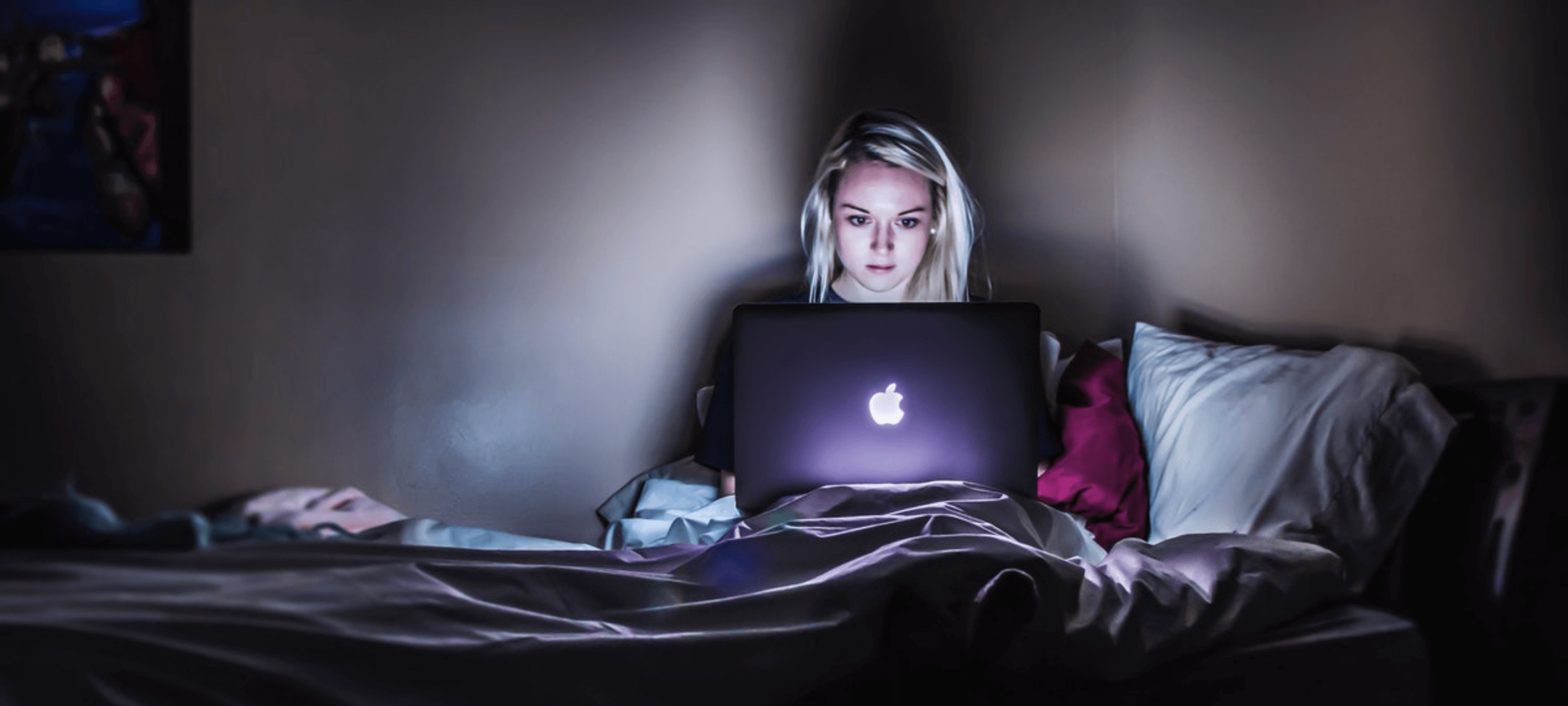
The Ethics of Online Dating
Opinion + AnalysisHealth + WellbeingRelationships
BY The Ethics Centre 18 MAR 2015
“Who here tonight has used online dating?” asked panel moderator Jackie Dent. Almost half the hands in the room, accurate for wider Australian demographics, shot up.
“Rather than the last resort, it’s become the logical first step. But it isn’t an even split between the sexes: it’s a buyer’s market for men”, said cyberhate researcher Emma Jane.
But even if half of us are doing it, most things digital tend to get tagged as ‘inauthentic’ and there’s still a stigma around online dating (less so with apps). So when it comes to creating a profile, what constitutes an ‘authentic’ representation of who we are? What we think is import to know about us is not always what other people think is important to know. Is it important to disclose the colour of your eyes? That you’re married? That you have HIV?
HIV activist Nic Holas generally recommends disclosing your HIV status up front so you don’t set yourself up for rejection, even though some people don’t want to disclose because it doesn’t give them a chance to fully explain their situation. “It’s only reasonable to disclose your status when sex is a sure thing”, said Holas. “In NSW, if you are HIV positive, you’re legally obliged to tell anyone who you intend to have sex with. But that’s not the case all over Australia.”
Does online dating make us racist?
The online space is a wonder world for niche interests and narrow preferences. If your thing is getting it on in a coffin, there’s “Vampire Passions” or if you just want to spoon-feed your lover quinoa salad, there’s “Gluten Free Singles”. But what if your thing is just ‘white guys’?
“No one would walk into a bar wearing a T-shirt that said ‘No Asians!’. But there’s no end to Grindr profiles with stupid lines like, ‘No rice, no spice, but black guys to the front of the line ;-)’”, said Holas.
“If you were approached in a bar by someone who is Asian, even if you don’t intend to sleep with him, there are plenty of ways to let him down without making explicit reference to his race – or for that matter, his height, weight, or HIV status.”
“You can’t feel empathy unless you’re in some way vulnerable. We’re still at an awkward early stage of a digital era that doesn’t really compensate for physical embodiment,”, added philosopher Matthew Beard. Which is kind of what Louis C.K. reckons when it comes to letting kids use text messaging: if you call someone fat but you’re not there to see how it hurts them, you don’t learn not to call people fat.
Which begs the question, is it fair to call it online dating when our ultimate judgments will always be made in person? Well, there are plenty of people using the likes of Tinder and Grindr to meet friends or just to chat. While there are sites like “Girlfriend Circles” that are designed especially for finding friends, the app market is still in waiting.
Can an algorithm know us better than we know ourselves?
But not everyone’s brutally honest about what they want. We might not want to admit to ourselves or to a computer that we have a racial preference, but the algorithm works it out pretty quickly. “After you’ve interacted with three people, that’s enough data for the algorithm to ignore what you said you want”, said algorithm scientist Luiz Pizzato.
“It’s like Clippy the paperclip popping up to say, ‘Hey, it looks like you’re being a bit racist. Let me help you with that”, added Beard. Only, everyone hated that overly enthusiastic paperclip so the algorithm uses stealth.
The most conventionally attractive people don’t necessarily get the most messages. “Most users assume that ridiculously good looking people will get flooded with messages, so they don’t message. Those people with looks that polarize, people who would get 10s and 3s in a hot or not challenge, are the ones who get the most messages”, said Pizzato.
Does online dating make us more likely to lie?
Both men and women add about five centimetres to their height and about 20% to their income when they fill out an online profile. And when you’re instant messaging on a device with a camera, quick verification snaps of “those extra inches in other departments”, added Holas, is standard practice for gay guys.
But not being 100 percent honest online isn’t an indictment of online daters’ morality, thinks Beard. “Online dating doesn’t inspire lying, it just exposes it. It holds a magnifying glass to the human experience of meeting people.” Who can honestly say they haven’t told a few lies or sweetened the truth on a first date?
Cheating
What do you do when you see a friend’s partner on a dating platform? And if you’re partnered, is talking to people online the same as flirting in a bar? “I think the best gauge of what counts as cheating is to ask yourself, ‘Am I comfortable telling my partner about this?’” said Holas.
While studies show that men are more likely to cheat in general, there isn’t much reliable research to conclude whether online platforms make cheating easier. “In any case”, said Jane, “something like five to 15 percent of children are not fathered by their biological father. So the idea that men are the only ones who cheat is clearly inaccurate.”
Scamming
The sharks are still lurking, but since the online waters have deepened and sites have more safety nets, they’re less of a threat. “Scammers often masquerade as religious people. They do this because they tend to then attract genuinely religious people who are often trusting and caring and then the scammer abuses that trust for money or a visa or whatever else,” said Pizzato.
What’s Next?
When there are too many online offerings, we tend to see a throwback. But it tends to be token, suggests Beard. “The resurgence of speed dating in hipster bars says more about their love of irony than anything else.” The shift to online dating is only going to gather pace as more and more services come onto the market.
What might those new services look like? “The gay community is always an early adopter market”, said Holas, “so you should expect to see heteros opening up to the idea of meeting new people in new ways soon enough.”
Ethics in your inbox.
Get the latest inspiration, intelligence, events & more.
By signing up you agree to our privacy policy
You might be interested in…
Explainer
Relationships
Ethics Explainer: Progressivism
Opinion + Analysis
Relationships
How to respectfully disagree
Explainer
Politics + Human Rights, Relationships
Ethics Explainer: Social philosophy
Opinion + Analysis
Politics + Human Rights, Relationships, Society + Culture
